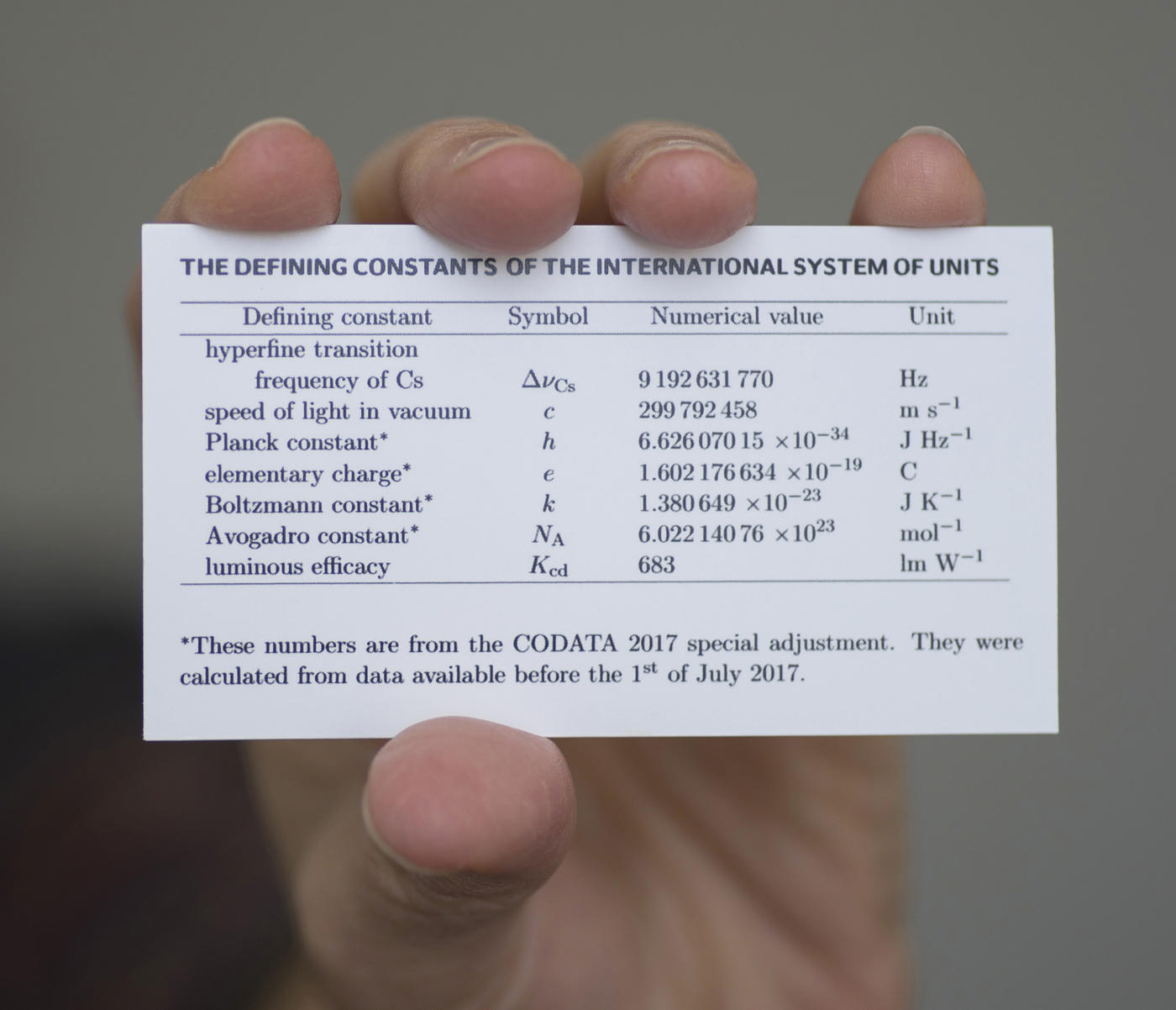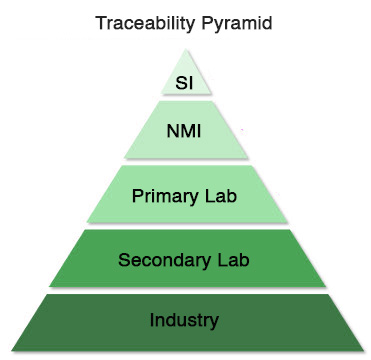Literally, everything that surrounds us has been measured—and I do mean literally. Look around you: Your desk, your chair, your pen, your pencil, the lead in the pencil, the paint on the pencil, the gas in your stove, the stove itself—it’s all been measured. The color of your orange juice, the packaging of your corn flakes, the corn flakes themselves, and the soil that the corn in your corn flakes was grown in—they’ve all been measured.
“But I’m outside on my veranda overlooking my estate,” you say. “Surely all of this isn’t measured.” Yes, the air temperature, composition, humidity, barometric pressure, wind speed and direction, particulates in the air, how high the clouds are, and even the color of the sky are measured. Trees, insects, and frog skins get measured, as well as how loud the frog croaks. Somebody wants to know, right?
From subatomic particles to the edges of the universe, humans have measured (or attempted to measure) it all.
Our world depends on measurement, and that is what The Quality Digest Roadshow series is all about. It’s about the people, equipment, and processes that measure everything around us. Starting with this episode, we’ll introduce you to the field of metrology—the science of measurement—and how it’s used. You’ll meet scientists, engineers, and the people who use measurement on an everyday basis—people like yourself.
Along the way, we hope you learn something about the field. To help you along, with each episode we’ll explain some of the terms used in that episode, maybe a bit of history, and tie it up with a clear explanation of what it all means.
Episode 1: Key points
Measurement vs. metrology
Measurement is the act of using an instrument to collect values about the physical properties of something else: length, speed, color, viscosity, brightness, temperature, weight. It’s something almost all of us do every day, in some form or another, at home or at work.
Metrology is the science and physics behind the measurement; it’s the processes and worldwide infrastructure that ensure the accuracy and repeatability of those measurements no matter where they’re taken. It’s what makes a meter a meter, and a kilogram a kilogram, everywhere on Earth.
A very brief history of international standards
Until the late 1700s, there were no standard measurement systems used worldwide. Each city, region, or culture developed its own measurements, often based on human anatomy (the length of someone’s arm, for instance). This worked fine on a local scale, but it made life difficult in a shrinking world with more international commerce. Your yardstick probably wasn’t the same length as the yardstick used 100 or 1,000 miles away.
To address this issue, in the 1790s, during the French Revolution, a set of measurement standards was developed by the French Academy of Sciences based on natural phenomena—things that could be measured in nature. For instance, the meter was one ten-millionth of the distance from the North Pole to the equator, and a kilogram was the mass of one liter of water. In addition, units of measure would be multiples of 10. Thus the metric system was born. Although slow to be adopted, the system gained traction up through the early 1800s.
It wasn’t until May 20, 1875, that the metric system became an official international system of measurements with the signing of the Convention du Mètre, or Treaty of the Meter, in Paris. The treaty established the Bureau International des Poids et Mesures (International Bureau of Weights and Measures) along with several governing bodies. Physical metric standards of the meter and kilogram were constructed and sent to signatories, with the master meter and kilogram (known as Le Grand K) kept in a vault in Paris. Now each signatory had its own copy of the metric standards with origins that were traceable to the originals in Paris.
In 1960, the General Conference on Weights and Measures, the governing body of the treaty, revised and simplified the system. This new system was called Système International d’Unités (International System of Units), referred to as SI. Seven base units were defined, with other measurements derived from these base units. For instance, the Newton—a unit of force, not the fig variety—is derived using kilogram, meter, and second. The seven base units of measure are:
• Meter: Length
• Kilogram: Mass
• Second: Time
• Ampere: Electric current
• Kelvin: Temperature
• Mole: Amount of a substance
• Candela: Luminous intensity

This wallet card displays the fundamental constants and other physical values that define a revised international system of units. Credit: Stoughton/NIST
Major technological advances have changed what we use as our fundamental definition for a particular unit. The card in the image above shows the fundamental physical constants used to define the seven base SI units.
Today, rather than use something like the distance from the North Pole to the equator as a reference for the meter, all measurement standards are based on fundamental physical constants such as the speed of light in a vacuum, or the hyperfine transition frequency of a cesium atom. Thus, a meter is how far light travels in a vacuum in 1/299,792,458 of a second, with a second defined as 9,192,631,770 cycles of the hyperfine transitions in a Cesium atom. A bit heady? Yes, but based on physics that never change.
National measurement institutes
Most developed nations have a national measurement institute (NMI). Continuing the study of measurement, NMIs maintain these standards and perform the extremely complex measurements used to calibrate them. They also provide all the traceability for that country’s measurement needs and represent the country in measurement matters of international trade and science. They continue metrology research at both a theoretical and practical level. In the United States, the NMI is the National Institute of Standards and Technology (NIST), part of the U.S. Department of Commerce.
When physical representations of various measures are needed, such as a meter bar, NMIs create these artifacts and calibrate them against the fundamental physical constants. These become master standards that can be easily viewed and used, and they form the foundation against which all measurements can be traced.
Traceability
Traceability is the system by which all critical measurements can be traced to an NMI such as NIST, and thus to fundamental physical constants. For instance, NIST maintains physical measurement standards, such as gauge blocks, with dimensions that are precisely known and based on physical constants. These physical blocks become the standard against which all gauge blocks in the U.S. are compared.
Traceability works something like this: A machine shop uses a micrometer for precise measurement of small parts. Periodically, they send that micrometer to a calibration lab to ensure it’s accurate. The calibration lab measures very precisely made gauge blocks—literally steel or ceramic blocks of various precisely known sizes—with that micrometer to determine how accurately it is reading, and reports any discrepancies. In turn, the calibration lab periodically sends its gauge blocks to be calibrated at a primary lab, often the gauge block manufacturer. The manufacturer compares the lab’s gauge blocks to its own master gauge blocks and notes any differences. Finally, the primary lab periodically sends its own gauge blocks to NIST for calibration to NIST’s master gauge blocks, which have been measured using the speed of light.
In this way, machine shop operators understand the accuracy of their micrometers and know that the accuracy can be traced back to NIST and to SI.




Add new comment